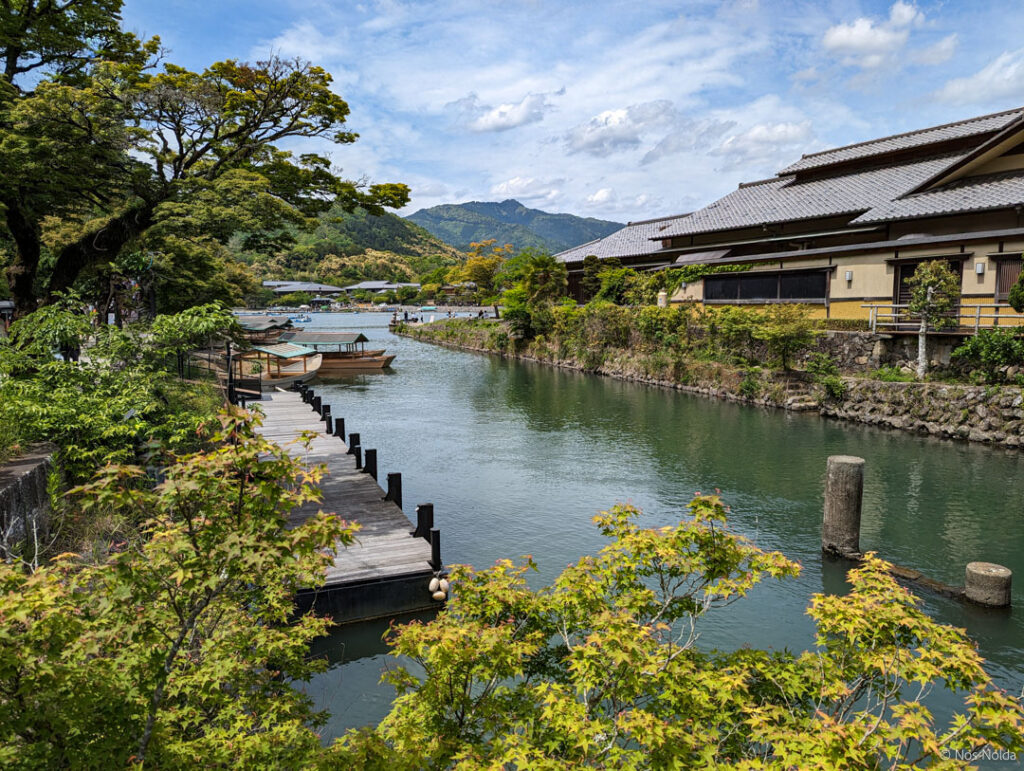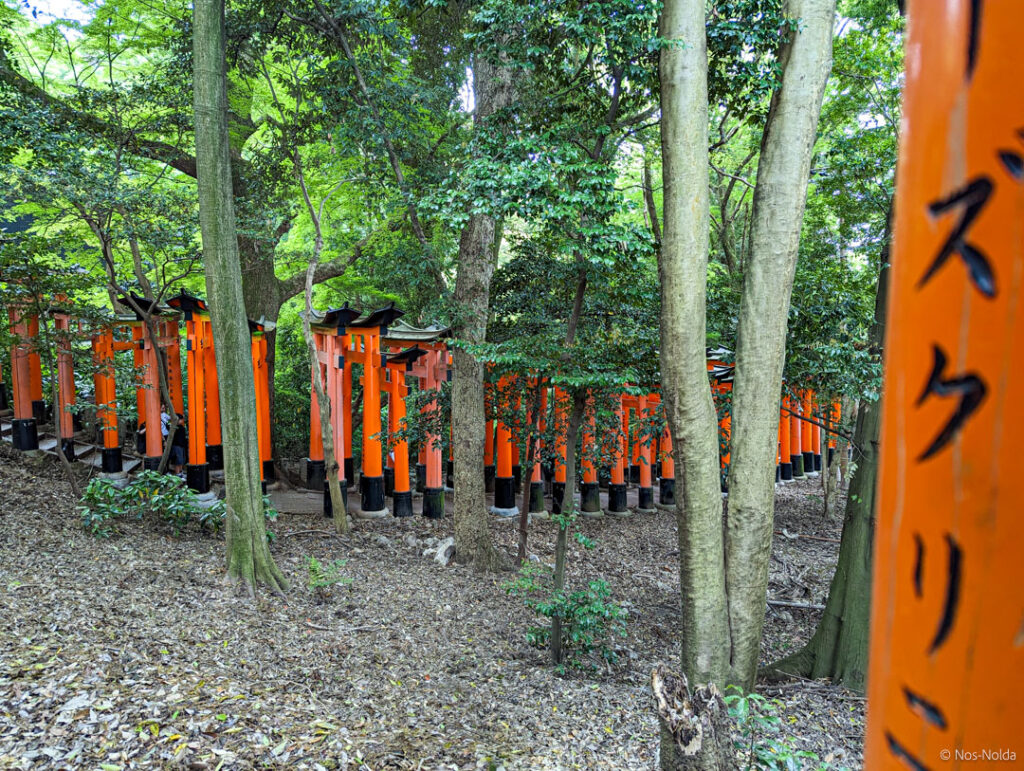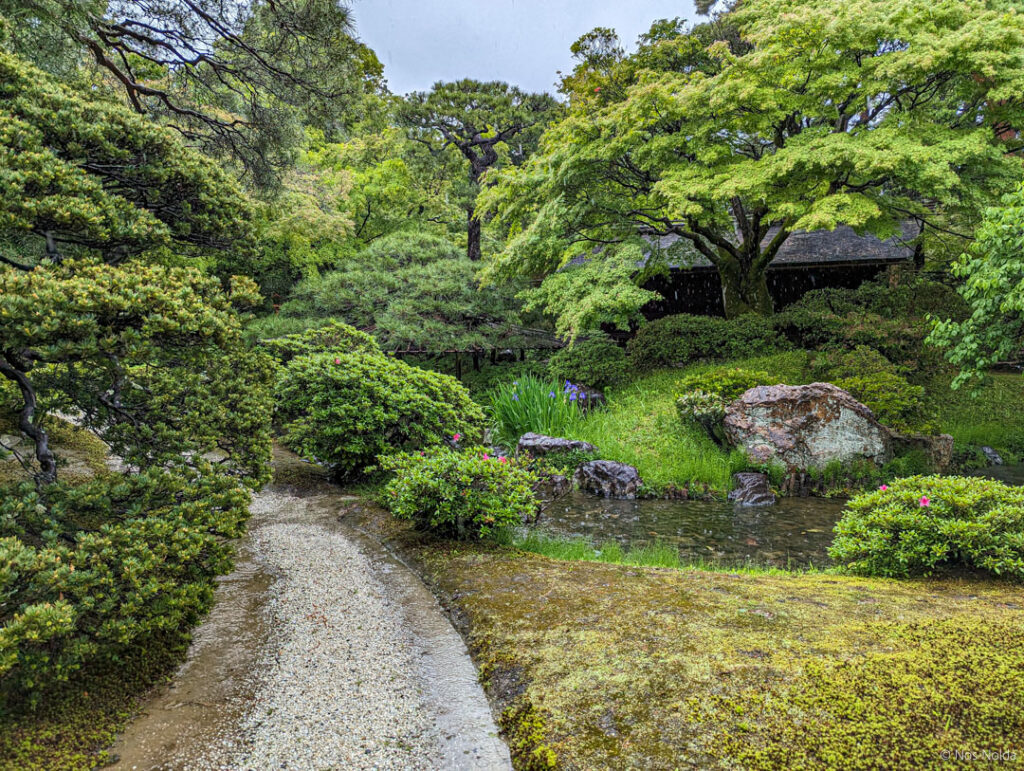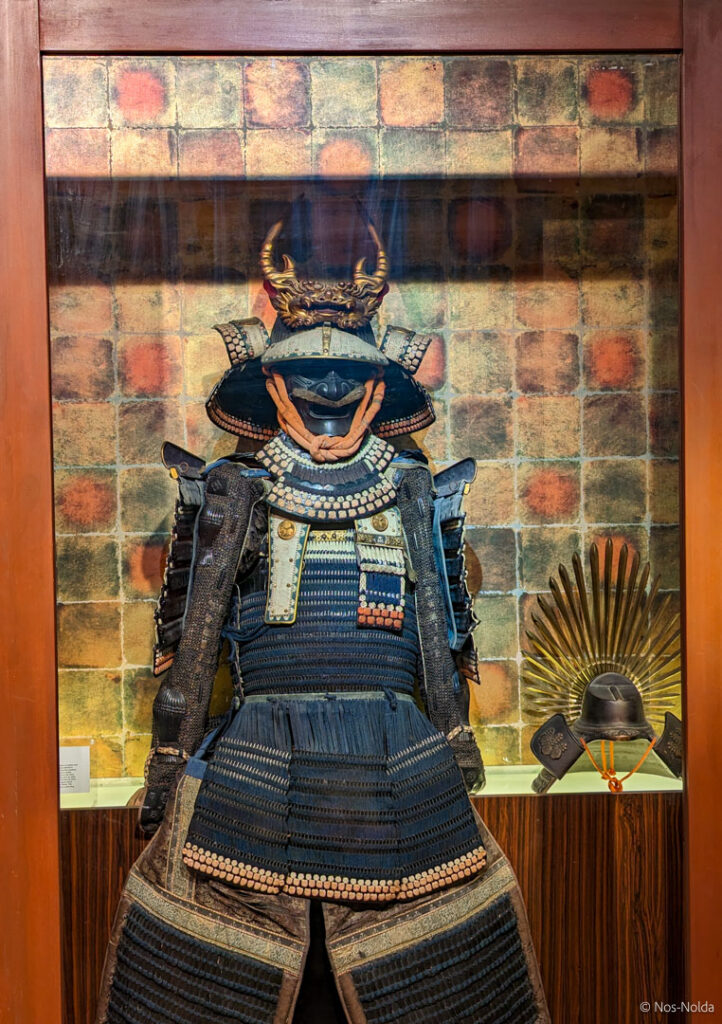Kyoto is one of the most popular destinations in Japan, and for good reasons. It is a city that combines ancient history, rich culture, stunning nature and modern convenience. Kyoto has over 2,000 temples and shrines, many of which are UNESCO World Heritage Sites. It also has beautiful gardens, bamboo forests, geisha districts, markets and museums. It is a place where you can experience the traditional and the contemporary aspects of Japan.
My family and I decided to visit Kyoto for 3 days as part of our trip to Japan. We flew to Osaka-Kansai airport and took a train to Kyoto in the early morning. We arrived before noon and checked in at our hotel close to the subway station. All of us were so excited to start exploring the city, so we quickly headed to Arashiyama, a scenic area on the western outskirts of Kyoto.
Day 1: Arashiyama and Nishiki Market
We take the bus to go to Arashiyama, and we arrive in from of the Togetsu-kyo bridge that we decide to cross.

We arrived to the monkey park, where we could see wild Japanese macaques roaming freely on the hillside. We climbed up to the observation deck, where we could feed the monkeys and enjoy the panoramic view of Kyoto. The monkeys were very cute and friendly, but we had to follow the rules and not touch them or look them in the eye.



After a quick lunch at a nearby restaurant, we walk in the Arashiyama surroundings and going in the direction of the park. Arashiyama is famous for its bamboo grove, a serene path surrounded by towering bamboo stalks. It is one of the most photographed places in Kyoto, and it was easy to see why. Walking through the bamboo grove was like entering a different world admiring the beauty of nature, where everything was green and peaceful.
We took a bus back to our hotel. We wanted to visit more places in Arashiyama, such as the Tenryu-ji temple, but most tourist attractions close early in Japan, so we decided to save them for another time.
In the evening, we went to Nishiki Market, a lively street market in the center of Kyoto. It is also known as “Kyoto’s Kitchen”, because it sells all kinds of food products, from fresh seafood and vegetables to pickles and sweets. We had fun browsing through the stalls and sampling some of the local delicacies. We especially enjoyed the tonkatsu, a deep-fried pork cutlet with a crispy crust and a juicy inside.
Day 2: Fushimi Inari-taisha, Kiyomizu-dera and Kimono Rental
The next day, we went to Fushimi Inari-taisha by bus. It is one of the most famous shrines in Japan, dedicated to Inari, the god of rice and business. It is best known for its thousands of vermilion torii gates that form a tunnel-like path up the hillside. The torii gates are donated by individuals and businesses who wish for good fortune.


We walked along the path, admiring the contrast between the red gates and the green forest. We also saw many stone fox statues, which are considered to be messengers of Inari. We took many photos along the way, trying to capture the unique atmosphere of the place.

Then we took another bus to go to Kiyomizu-dera, one of the most famous temples in Kyoto. It is located on a hillside overlooking the city, and it has a large wooden balcony that juts out from the main hall. The balcony offers a spectacular view of Kyoto, especially during cherry blossom or autumn foliage seasons.
We visited the temple and learned about its history and significance. It was founded in 778 by a Buddhist monk who had a vision of a waterfall flowing from a nearby mountain. The name Kiyomizu means “pure water”, and it refers to the waterfall that still runs through the temple grounds. The temple is also famous for its Otowa-no-tani spring, where visitors can drink from three streams of water that are said to grant different benefits: longevity, success and love.





We also went to Sannenzaka street, a charming slope lined with traditional wooden houses and shops. We ate some ice cream there before going to a kimono rental shop nearby. We wanted to experience wearing a kimono, which is a traditional Japanese garment that consists of several layers of fabric wrapped around the body and secured with a sash called obi.
We chose our kimonos from a variety of colors and patterns, and then we had them fitted by professional staff. They helped us put on the kimonos and adjusted them to make sure they looked perfect. They also did our hair and makeup, and gave us some accessories to complete the look.
We felt like we had traveled back in time as we walked around in our kimonos. We felt very elegant and graceful in our kimonos, and we enjoyed posing for photos.
We finished the day with a visit to Maruyama Park, a large public park that is famous for its cherry blossom trees. We went there to enjoy the zen atmosphere of the park, which has a pond, a bridge, a pagoda and a shrine.
Wearing kimonos in this beautiful zen park was a wonderful experience.
We went back to the city center to eat sushi at a conveyor belt restaurant, where we could choose from a variety of sushi dishes that passed by on a moving belt. We had a lot of fun picking our favorite sushi and trying new ones.
Day 3: Kinkaku-ji, Kyoto Imperial Palace and Ninja Museum
The next day, it was raining, but we decided to go to Kinkaku-ji temple anyway. It is one of the most iconic landmarks in Kyoto, and it is also known as the Golden Pavilion. Kinkaku-ji is a Zen temple that has a three-story building covered with gold leaf. It reflects beautifully on the pond that surrounds it, creating a stunning sight.
We went there early in the morning, we were lucky to find that the rain had scared away most of the visitors, so we could enjoy the temple in peace. We also found that the rain added a special charm to the place, as it created ripples on the water and made the gold shine brighter.
We admired the temple from different angles and took some photos. The tempple was built in 1397 by a shogun who wanted to create a paradise on earth. He intended to use it as his retirement villa, but he died before he could move in. His son converted it into a temple and dedicated it to his father’s soul.
The temple has been burned down several times by wars and arson, and the current building is a reconstruction from 1955. It represents three different styles of architecture: the first floor is in shinden style, which was used for aristocratic mansions; the second floor is in buke style, which was used for samurai residences; and the third floor is in karayo style, which was used for Zen temples.
We also visited the garden around the temple, which has various features such as statues, bridges, islands and stones. The garden is designed to evoke the Buddhist concept of paradise, where everything is harmonious and peaceful.

After visiting Kinkaku-ji, we went to the Kyoto Imperial Palace by bus. It is the former residence of the emperors of Japan, who ruled from Kyoto until 1868. It is located in a large park that is open to the public.


The palace is a complex of buildings that are arranged according to strict rules of symmetry and hierarchy. The main building is called Shishin-den, which means “Hall for State Ceremonies”. It is where the emperor held important events such as coronations and receptions. It has a distinctive roof with two phoenixes on top. We also saw other buildings such as Seiryo-den, which was the living quarters of the emperor; Otsune-goten, which was the residence of the empress; Ko-gosho, which was used for smaller ceremonies; and Oike-niwa, which was a pond garden.
In the afternoon, we decided to go to a museum to escape from the rain. We chose to go to the ninja/samurai museum, which was located in Nishiki Market. It was a small but interesting museum that showcased the history and skills of ninja and samurai, who were covert agents or mercenaries in feudal Japan.


We saw various exhibits such as weapons, tools, costumes and documents related to ninja and the guide explains us all the history related to samurai. We also had a chance to experience being a ninja ourselves by throwing shuriken (ninja stars) . Then, we wore samurai outfits to make funny pictures. We had a lot of fun pretending to be ninja and testing our abilities.
For dinner, we ate delicious udon at a nearby restaurant. Udon are thick wheat noodles that are served in broth or with sauce. They are one of the most popular and comforting dishes in Japan, and we loved their chewy texture and savory flavor. We tried different toppings such as tempura, meat and vegetables.
After dinner, we packed our bags and got ready to leave Kyoto in the early hours in the day after . We had a wonderful time in the city, and we felt that we had only scratched the surface of its beauty and charm. We wished we could stay longer, but we also looked forward to our next destination: Osaka.

Leave a Reply